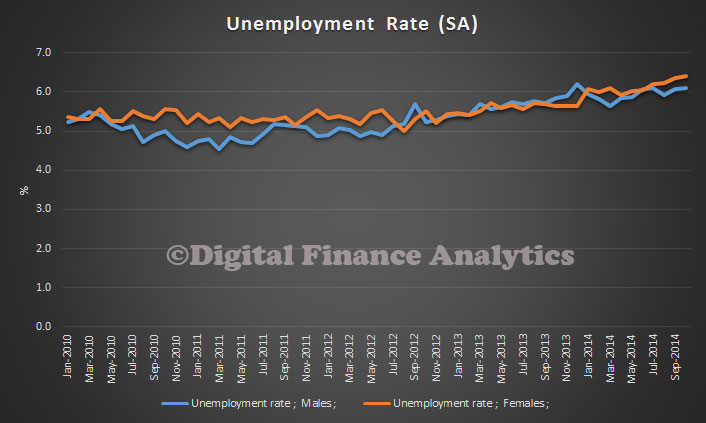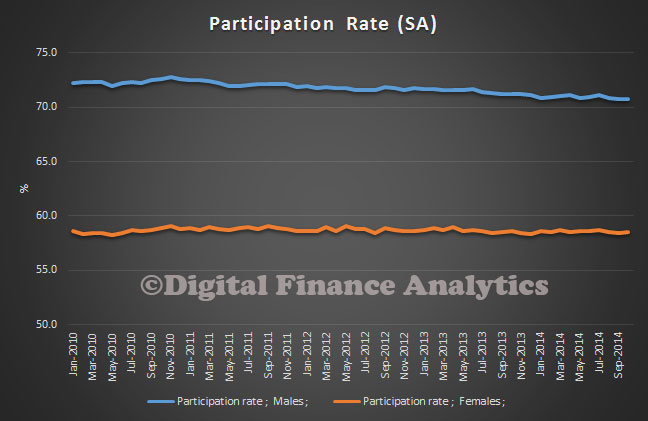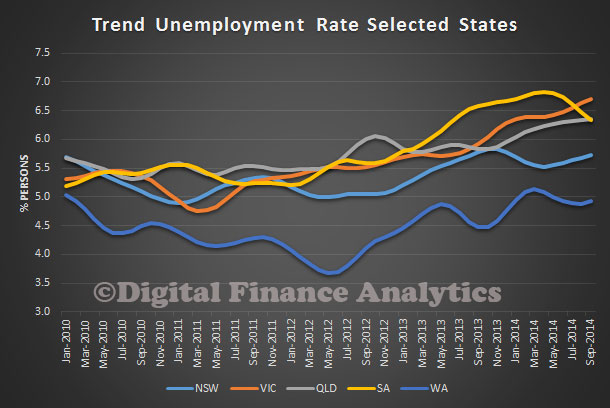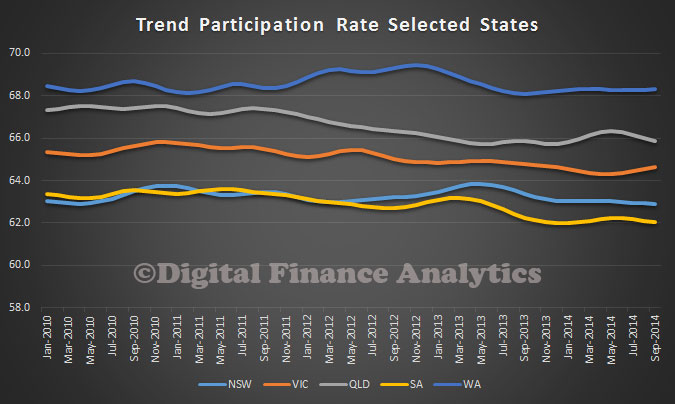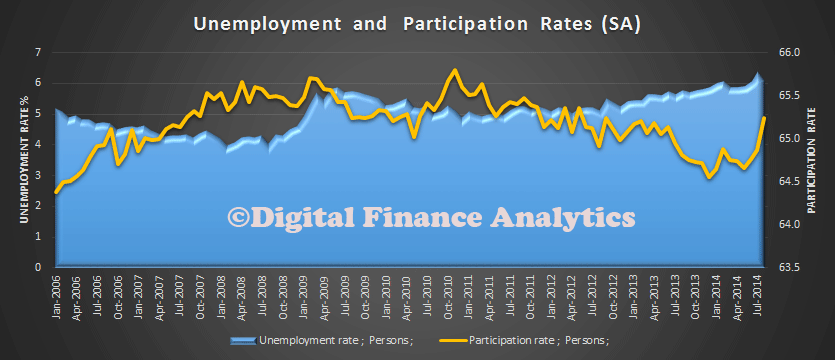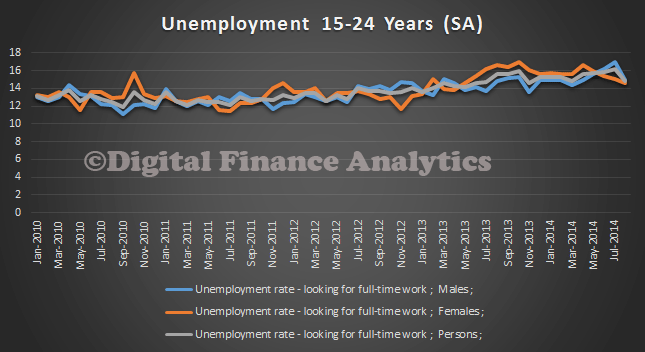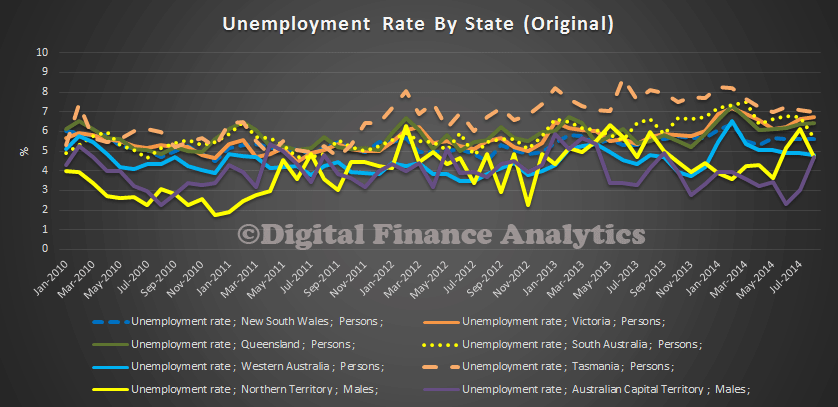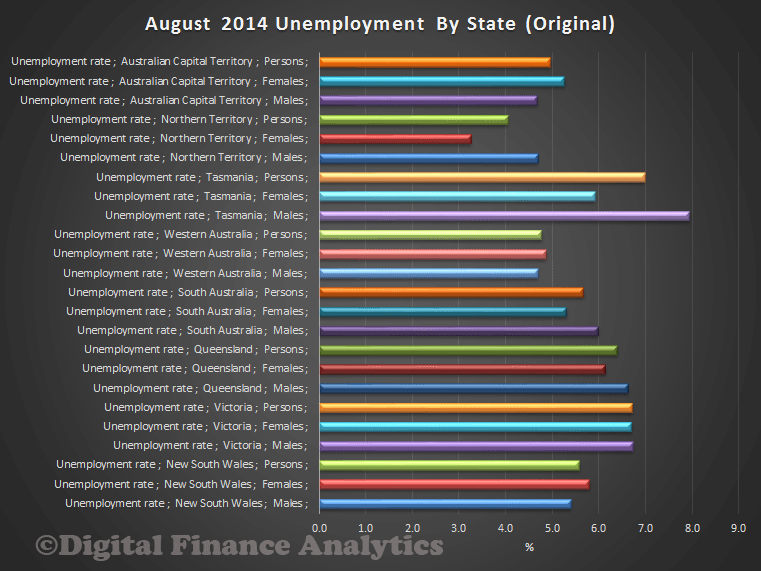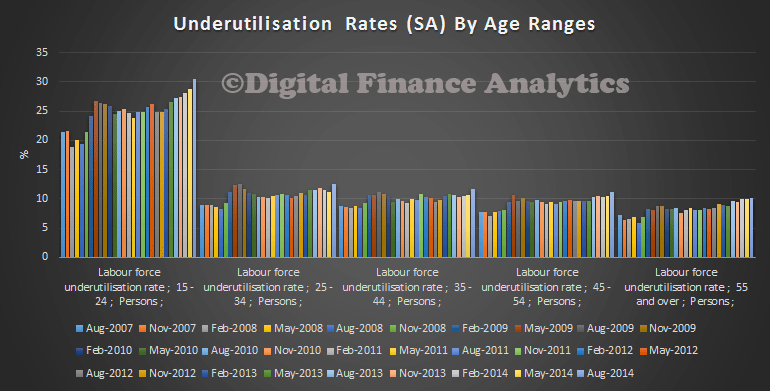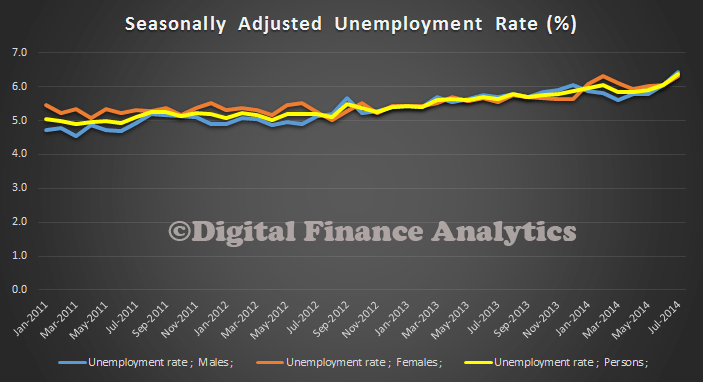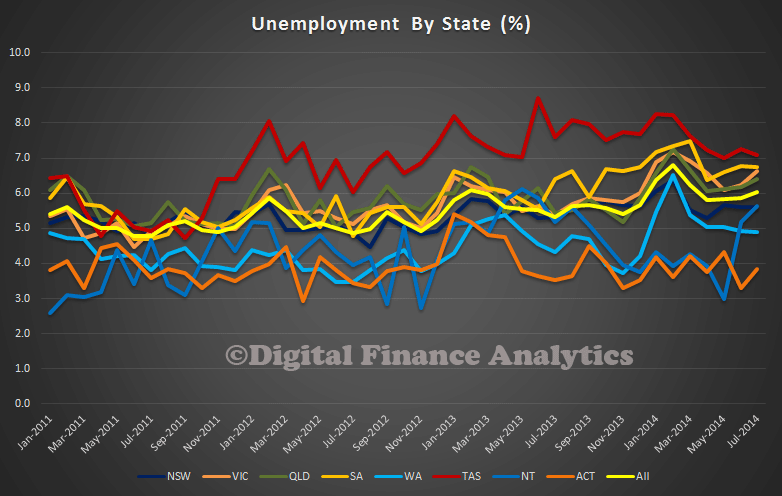The latest data from the ABS was released today, providing an updated view of unemployment. The underlying trends remain, despite the fact that the seasonality of the labour force data has been re-estimated with specific adjustments made for the changed pattern of supplementary surveys. These adjustments have been applied to the seasonally adjusted series from December 2013 onwards.
Based on trend estimates:
- Employment increased to 11,589,000 from a revised September 2014 estimate.
- Unemployment increased to 768,700.
- Unemployment rate remained steady at 6.2% from a revised September 2014 estimate.
- Participation rate remained steady at 64.6%.
- Aggregate monthly hours worked increased 0.4 million hours to 1,607.9 million hours.
Seasonally Adjusted:
- Employment increased 24,100 to 11,592,200 from a revised September 2014 estimate. Full-time employment increased 33,400 to 8,058,500 and part-time employment decreased 9,400 to 3,533,700.
- Unemployment increased 7,100 to 772,100. The number of unemployed persons looking for full-time work decreased 10,900 to 532,100 and the number of unemployed persons only looking for part-time work increased 18,100 to 240,000.
- Unemployment rate remained at 6.2% from a revised September 2014 estimate.
- Participation rate increased 0.1 pts to 64.6%.
- Aggregate monthly hours worked increased 24.9 million hours (1.6%) to 1 ,614.4 million hours.

